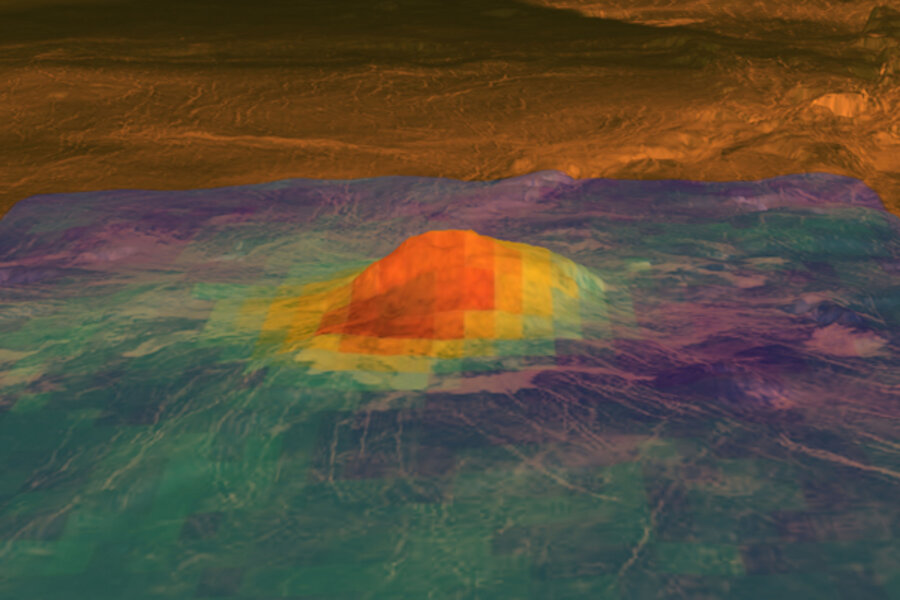Venus may have been a land of volcanoes - and could still be
Loading...
The next time you see videos of lava welling out from cones on the flanks of Hawaii's Kilauea volcano, think Venus – the planet, that is.
The second rock from the sun appears to have been volcanically active, perhaps within the past several hundred years, and more certainly within the last 2.5 million years, according to a team of planetary scientists.
The type of volcanism on Venus appears to be quite similar to the volcanism building the Hawaiian Islands, according to Sue Smrekar, a researcher at NASA's Jet Propulsion Laboratory in Pasadena, Calif.
The team's conclusions appear tomorrow on the journal Science's on-line sibling, Sciencexpress. If they hold up, Venus would join an elite handful of planets and moons in the solar system exhibiting volcanism in recent geologic times.
The conclusion comes from an attempt to solve a longstanding puzzle: Why is Venus's surface virtually crater free?
The inner planets got pummeled by objects knocked out of the asteroid belt or the more-distant Kuiper Belt during a period early in the solar system's history known as the Late Heavy Bombardment. On Earth, those craters have been erased by plate tectonics – the constant movement and recycling of large patches of wandering crust that make up the Earth's surface.
But scientists have found that tectonics need a large amount of water in the crust to work, and measurements suggest Venus's crust is too dry.
Venus's Kilauea?
Maps produced by the Magellan orbiter, however, show features that looked like large shield volcanoes, such as Hawaii's Kilauea and Mauna Loa. Some of these rise roughly a mile above the surrounding plain and have rise diameters that span more than 1,600 miles.
Gravity measurements found what scientists interpreted as large magma plumes beneath them, leading to the idea that the planet's interior cools itself by releasing heat through eruptions at hot spots, instead of along plate boundaries.
Scientists have identified nine hot spots, and data from the European Space Agency's Venus Express orbiter show that the surfaces at three of the most promising contained high concentrations of iron-bearing minerals, as one would expect eruptions to deliver.
Scientists then tried to estimate the age of those surfaces by applying what they know about how quickly such minerals would weather in the planet's high surface temperatures and brutal atmospheric chemistry. The concentrations of the minerals suggested that they hadn't been exposed to the elements long, from a geologic perspective, the researchers concluded.
'Not a tidy story'
The result appears to undermine a competing theory on why Venus lacks large amounts of craters: that the planet resurfaced itself in a massive overturning of the crust at some point in the past, burying the cratered surface under a fresh layer of lava.
Still, the new conclusions are "not a tidy story," Smrekar acknowledges.
What scientists think they know about weathering processes on Venus has come from lab experiments, and the results from those experiments don't line up perfectly with the timeline scientists think they are seeing on Venus.
"We believe our explanation is the correct explanation," she says, "but we haven't been able to reproduce it in the lab."
The broad age bracket the team has placed on active volcanism on Venus represents a maximum, averaged over the entire planet. But, she adds, "it could be happening today."





